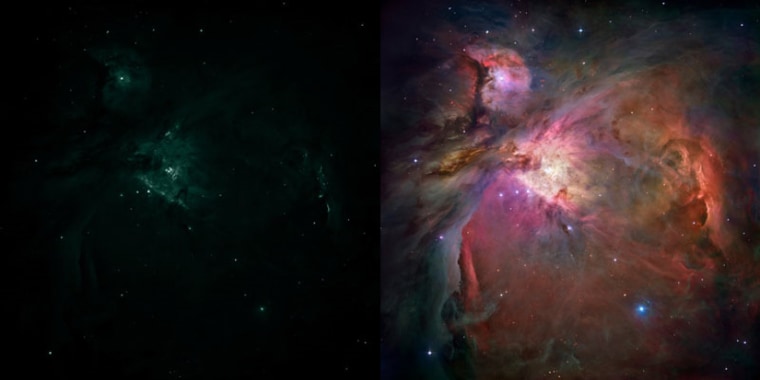A couple across the coffee shop from me have just picked on a poor unsuspecting passerby to take their photograph. They must be tourists, hopefully having a great time in my home city of Norwich. But I bet that when they see the picture, they'll regret not having turned on the red-eye reduction function (those annoying multiple flashes that go off before the real flash).
Fortunately, with modern computer software, it's easy to get rid of that slightly scary and sinister red-eye effect after a few clicks of the mouse.
My thoughts turn to Emily Lakdawalla from the Planetary Society, who has recently been the subject of a media frenzy after a conspiracy theorist called the image into question, accusing NASA of "tampering" with a picture of Saturn's moons.
What had she done? Nothing more than the astronomical equivalent to removing red eye. For some reason, it's OK for us all to touch up pictures of ourselves, but not OK for scientists to touch up pictures of the universe.
The Cassini spacecraft that snapped the original raw images of Titan and Dione uses a very standard technique to get a color picture by taking individual shots through red, green and blue filters that are then recombined to make the final color picture.
It's a technique that has been used for decades. Charge-coupled devices, or CCD cameras, come with one of two types of light sensitive receiver: monochrome or color. Employing the technique described above with a monochrome camera with different color filters will give a higher-resolution color image than a standard color camera.
Unfortunately, when using this technique on a moving spacecraft, the red, green and blue images can be out of alignment so Emily had corrected for this. She confesses that it was a pretty quick job just to get the image out to the public, and I am pleased she did. Before the image gets released for proper scientific use, much more time will be spent on the final result.
One of the problems with the night sky is that most stuff actually looks bland to the human eye. Check out the examples of the Orion Nebula as it would look to the human eye through a telescope (left image, above) — I had to do this with Photoshop to simulate it, let it go — and how it looks to a digital camera through a telescope plus some processing work (right image).
As you can see, there is so much more detail in the "enhanced" image. This not only makes it look prettier, but more importantly it allows scientists to learn and deduce so much more about the object under study.
It's probably surprising to learn that the human eye isn't the most efficient collector of light, and that these enhanced images are much more representative of reality than our dodgy eyes can show us.
So really, should we complain? I think not. After all, nearly every image of the universe released by NASA or indeed anyone (even me) has more than likely had something done to it; be it to sharpen it up a little, remove bits of dust on the lens, bring out more detail or even to correct for a slight misalignment of individual color images.
Conspiracy theorists, give Emily and other space scientists a break. After all, without them, we wouldn't get to see the true glory of the cosmos.
is astronomy presenter on the BBC's "The One Show," fellow of the Royal Astronomical Society and chairman of the Norwich Astronomical Society.
